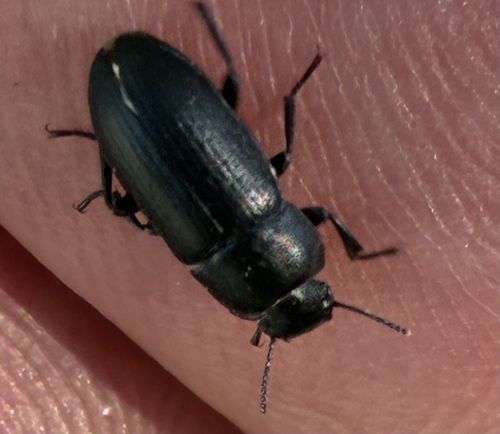Click Beetle
Scientific Name: Family Elateridae (specific genus/species challenging without more detail)
Order & Family: Coleoptera (Beetles), Family Elateridae
Size: Typically 5mm to 30mm (0.2 to 1.2 inches) in length, though some species can be larger.

Natural Habitat
Found in various habitats including forests, grasslands, gardens, and agricultural fields. Larvae (wireworms) live in soil, rotting wood, or under bark.
Diet & Feeding
Adult click beetles generally feed on nectar, pollen, sap, or sometimes soft-bodied insects. Larvae (wireworms) can be herbivorous, feeding on plant roots, seeds, and tubers, or carnivorous, preying on other soil insects.
Behavior Patterns
Adults are recognized by their unique 'clicking' mechanism; when overturned, they can snap a spine on their prosternum into a groove on their mesosternum, propelling themselves into the air to right themselves. They are typically nocturnal or crepuscular. Larvae are known as 'wireworms' due to their hard, elongated bodies.
Risks & Benefits
Risks: Wireworms (larvae) can be agricultural pests, damaging crops like corn, potatoes, and other vegetables by feeding on their roots and seeds. Benefits: Some click beetle larvae are predatory and can help control populations of other soil-dwelling insect pests. Adults are often harmless to humans and can be minor pollinators or a food source for other animals.
Identified on: 10/2/2025